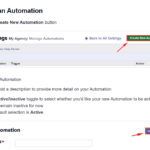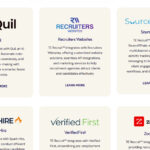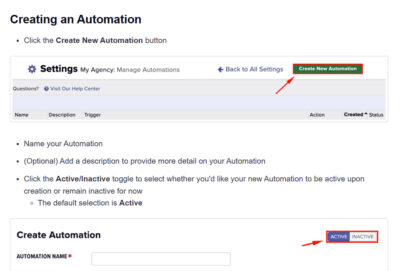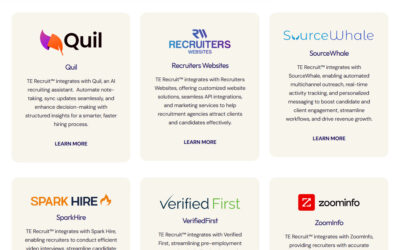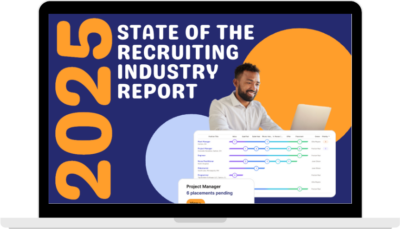(Editor’s note: The information from this article by Top Echelon Recruiting Software has been taken from an Expert Recruiter Coaching Series webinar by Bob Marshall of TBMG International titled, “AI and the Future of Recruiting, Part One” Click HERE to watch the video of that training webinar for free.)
Artificial intelligence (AI) has arrived. It’s not a sci-fi plot anymore—it’s real, it’s evolving, and it’s already reshaping how recruiters work. Whether you’re cautiously curious or fully embracing the shift, the truth is this: AI is here to stay.
In his recent webinar for the Top Echelon Recruiter Coaching Series, recruiting legend Bob Marshall—a veteran with over 43 years in the business—offered recruiters a grounded, practical guide to understanding AI in a way that serves their business instead of replacing it. “My job,” Bob said, “was to give you a snapshot of where AI is now, what’s coming, and how you can use it without losing your essence as a people-oriented recruiter.”
Let’s break down Bob’s insights and expand on them, from AI basics to recruiter-specific use cases, and how AI can be both a power tool and a competitive edge—if you know how to wield it.
Understanding AI: From Buzzword to Business Tool
AI is more than a trend. It’s a multifaceted technology that falls into four categories:
-
Reactive Machines – Task-specific AIs with no memory or learning ability.
-
Limited Memory – This is where AI starts learning and improving based on data.
-
Theory of Mind – A futuristic level where AI could understand emotions and mental states.
-
Self-Aware AI – A theoretical future where AI has consciousness. (Nope, we’re not there yet.)
The most relevant form for recruiters is Generative AI, a type of Limited Memory AI. This is the category that includes tools like ChatGPT and Google’s Bard. It can generate new content—text, images, videos, even code—based on prompts and trained data sets. Think of it as a conversation partner that can also write your job ads, build your client list, or help you prep candidates.
“This technology changes by the day,” Bob emphasized. “But if you approach it like you would a talented assistant—someone you can delegate tasks to—you’ll find it’s a tool that frees you up to do the truly human parts of recruiting.”
AI Isn’t Taking Your Job—It’s Changing It
There’s no shortage of fear-mongering headlines about AI wiping out jobs. But Bob takes a more nuanced view.
“People forget that technology doesn’t erase work—it shifts it. We’ve seen this before,” he explained. A recent Robert Half survey backs this up: 41% of workers believe AI will have a positive impact on their careers, while only 14% fear it could make their skills obsolete.
Younger generations are particularly optimistic. About 63% of Gen Z and 57% of Millennials are excited about AI’s potential. “The hesitation is stronger in Gen X and Boomers,” Bob noted with a chuckle. “Maybe because we’ve seen a few more trends come and go.”
The key takeaway? AI isn’t coming for your desk. But it might change what’s on your desk—and how fast you can move it.
What Recruiters Actually Do—And How AI Can Help
Bob breaks down the recruiting process into four essential parts:
-
Source – Find and target candidates.
-
Assess – Match them to job orders.
-
Deliver – Present and prep them for interviews.
-
Finalize – Close deals and handle paperwork.
AI can support each of these areas:
-
Sourcing: AI builds lists faster than humans ever could.
-
Assessing: It scans resumes and profiles quickly, surfacing high-probability matches.
-
Delivery: AI can draft personalized responses, prep materials, and anticipate questions.
-
Finalizing: Automated follow-ups, counteroffer strategies, and onboarding help are all possible.
“Recruiters waste a lot of time on tasks that don’t bring in revenue,” Bob warned. “AI can eliminate those bottlenecks.”
Practical AI Use Cases: 4 Prompts to Save Hours
Throughout the webinar, Bob introduced four real-world prompts from his collaborator Kevin Franks, a recruiting tech expert who co-hosts the Elite Recruiter Masterclass.
Build a Client List—Fast
Bob’s pet peeve? Recruiters who spend weeks building target lists and then never finish.
“You are a world-class recruiter of civil engineers specializing in bridge construction. List the top 20 employers in the Midwest U.S. to contact.”
Plug that into ChatGPT and you’ve got a client list in seconds. You can add filters like company size, revenue, or location to refine further.
Write Better Job Postings
Generic job descriptions don’t attract passive candidates. Great postings do.
“You are a content writer with 5+ years of experience in recruitment. Write a job ad for a CPA CEO role in a B2B SaaS company. Make it inclusive and avoid jargon like ‘rockstar’ or ‘ninja.’”
What comes back isn’t just text—it’s compelling, SEO-friendly, and ready to publish.
Create Boolean Strings for Sourcing
Searching LinkedIn or ATS systems requires complex Boolean logic.
“Create a Boolean string for a Java Software Engineer with experience in multinational firms, based in California, at a senior or director level.”
One prompt = a search-ready string that can uncover gold you’d miss by hand.
Other Tasks AI Can Do Today
-
Write email templates
-
Create candidate summaries
-
Suggest interview questions
-
Decode technical job titles
-
Research salary ranges and competitors
“Think of AI as a junior recruiter who never sleeps,” Bob said. “Just give it instructions like you would any assistant.”
The Upside of AI in Recruiting
Here’s what AI does well:
-
Speed: AI is fast. Building lists, analyzing resumes, generating copy—it all takes minutes.
-
Consistency: It doesn’t forget or get tired.
-
Insight: AI can surface patterns in candidate behavior, job trends, and even cultural fit.
-
Scalability: What takes hours for one recruiter, AI can do for 10.
Companies are already using it:
-
Amazon uses AI to fast-track candidates by comparing resumes to current employees.
-
Hired.com uses AI to match tech talent more precisely.
-
HiView uses video interviews and AI to predict candidate fit.
-
B.Maury and Vietnam use AI to drive DEI and internal mobility.
The Pitfalls and Missteps of AI
But Bob doesn’t sugarcoat it: AI has its problems.
-
Bad Data: If AI is trained on biased or outdated data, it can perpetuate bias.
-
Auto-Rejects: Many resumes never get seen by a human. “99% of resumes get filtered out by AI due to formatting or missing keywords,” Bob noted.
-
Regulation Tsunami: Over 160 bills regulating AI were in play as of mid-2023. Expect more.
“Use AI,” Bob advised, “but don’t delegate judgment to it.”
10 Human Skills AI Can’t Replace
Even with all its capabilities, AI has limits. Bob shared 10 irreplaceable human skills:
-
Critical Thinking
-
Emotional Intelligence
-
Time Management
-
Project Management
-
Interpersonal Skills
-
Analytical Reasoning
-
Empathy
-
Entrepreneurship
-
Creativity
-
Negotiation
“Refrigerators don’t take counteroffers,” Bob joked. “But people do. And it takes a human recruiter to navigate that.”
The Future Workplace: Recruiters Still Run the Show
In Bob’s words, “We don’t recruit job shoppers. We recruit people who are not looking, who are happy, productive, and working.”
AI can’t cold-call with empathy. It can’t coach a nervous candidate or read a hiring manager’s mood. It can’t close. That’s still on you.
Bob outlined what sets top recruiters apart:
-
They’re marketers who prospect every day.
-
They’re recruiters who know how to engage passive talent.
-
They’re negotiators who prep, close, and navigate objections.
-
They know their numbers and drive performance.
Final Thoughts: AI Is a Tool—Not a Threat
Bob’s core message? Don’t be afraid of AI.
“It won’t replace you. But a recruiter who uses AI might,” he said. “So learn it. Use it. Make it your friend.”
AI won’t write your closing script or build a long-term relationship with a CFO. But it will help you get more of those conversations. And in the end, that’s what wins.
In the words of Bob Marshall:
“We thrive in a marketplace where we only place with 4% of our clients. Where 10 to 25% of our marketing attempts succeed. Where we can only talk and listen—no eye contact, no body language. We do it all through conversation. AI can help us do that better, faster, and more efficiently. But it won’t do it for us.”



